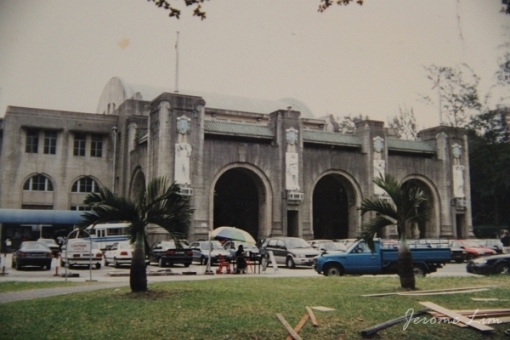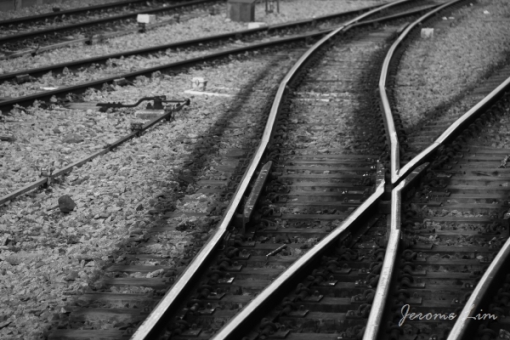There I go again … another journey through Tanjong Pagar
By Jerome Lim, 11 March 2011.
I guess I have not had enough of it, despite probably having tens of, if not a couple of hundred journeys out of Tanjong Pagar. I did it once again, since proclaiming that that journey taken with some friends at the end of last year would possibly have been my last. Having had a mixed bag of experiences on the many journeys through the arches of the grand old station, the ones that probably I remember most of are the regular delays that one comes to expect on the far from reliable train service that KTMB operates. Part of the reason for this, some of the archaic infrastructure and practices still in use on the old railway, does perhaps lend itself to an experience that you would certainly not get on the efficient railways that criss-cross much of the European continent – one that seems out of place in the ultra modern and efficient world we have grown accustomed to in Singapore.

I will certainly miss taking train journeys out of Tanjong Pagar … something that will perhaps motivate me to take a few more over the next few months before the station closes.
Stepping into the station itself would somehow take you back in time, the atmosphere being one which seems more at home in the Singapore of the 1960s and 1970s. The large airy concourse that greets the visitor is adorned with mosaic murals that speak of a style that was prevalent of a time we have left behind and depict scenes from the Malayan peninsula that would have been more common in that era. Over the years that I had have an awareness of the layout of the concourse, nothing much has changed except perhaps that the occupants of some of the spaces, and an invasion of a Tourism Malaysia hut in the middle of it. It is in one of the spaces along the concourse that some nice food can be found and to perhaps add a old world flavour to the station, you would find food vendors that would be more comfortable conversing in Bahasa Melayu, once a common language on the streets. Read more
Journeys through Tanjong Pagar: First Impressions …
By Jerome Lim, 21 Sep 2010.
I had as a child, been fascinated by the old railway station at Tanjong Pagar. The grand old station building, which has provided many of us with a passage to the north, had been one that always attracted my attention whenever I passed it in the backseat of my father’s car. The very first impression I have of the station is one that has been shaped by the food stalls that sprouted up in the open air car park in front of the station every evening, stalls that seemed to glow in the shadows cast by the grey façade of the railway station.

Having to bid farewell to another old friend?
By Jerome Lim, 24 May 2010.
It was with sadness that I read the news about the impending closure of the Tanjong Pagar Railway Station in July next year, which was announced today. It has very much been a part of the Singapore that I grew up loving, one that I first became acquainted with on the makan trails that may parents led us on from the heights of Mount Faber. What the news release does not say is whether the station which has served for so long, providing many of us, including myself, with many memories of adventures on the railway to the Federation or Malaya as we may have referred to to it back then, will have to go, as both Malaysia, which owns the station and the railway land, and Singapore seek to jointly redevelop the parcels of land around the railway.

The entrance to Tanjong Pagar Railway Station with the four pillars of Malaya’s economy, Agriculture, Commerce, Transport and Industry. Read more
KTMB station in Tanjong Pagar to relocate to Woodlands by July 2011
By S Ramesh, 24 May 2010.
SINGAPORE: Singapore and Malaysia capped a historic day in relations on Monday with agreement on a long outstanding bilateral issue.
After 20 years, both sides have arrived at a solution on the Malayan Railway Land in Singapore.
The leaders of the two countries agreed to move the station at the heart of the city centre in Tanjong Pagar to Woodlands Train checkpoint, near the border by the 1 July 2011.
The smiles said it all – of a retreat that has been fruitful with significant moves.
The centrepiece must surely be the issue of the railway land and lines, spelt out in the Points of Agreement (POA) signed in 1990.
Source: Channel NewsAsia






























